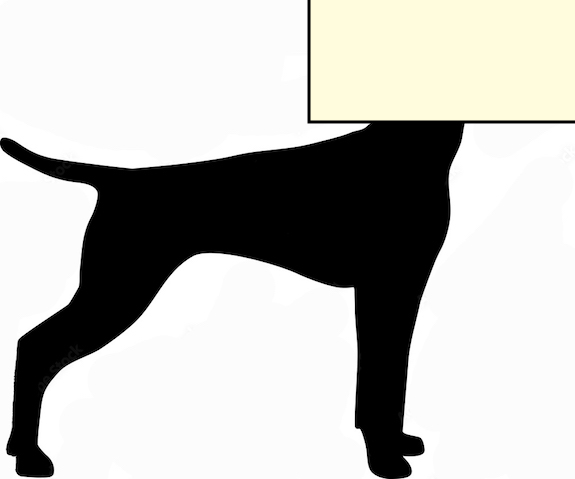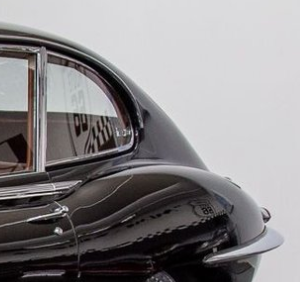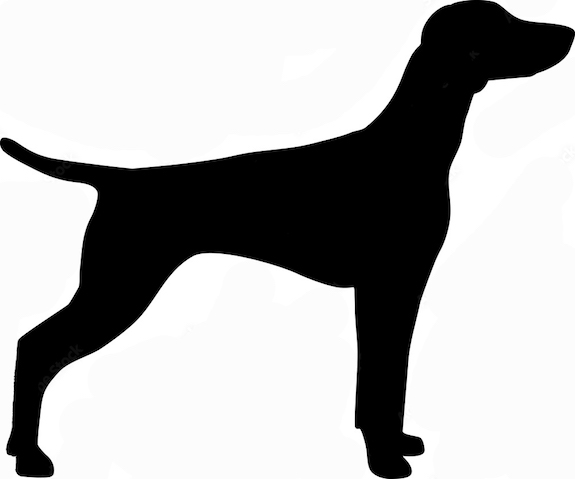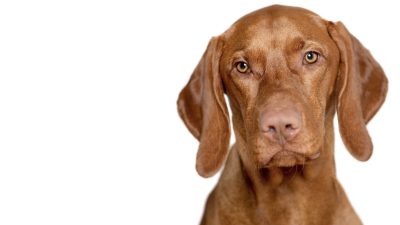
Being able to identify a dog’s breed from its silhouette suggests that the dog has “type” – – – that quality that makes a Boykin Spaniel look like a Boykin and not an American Water Spaniel.
In a few breeds, grooming accounts for a dog’s archetypical silhouette (think Poodle), but when one takes coat out of the equation, it is a dog’s conformation that really establishes type, and should.
In our view, much of a breed’s type starts with the head, and remember now, we’re still working with silhouettes. Is the dog dolichocephalic, brachycephalic, and mesaticephalic? What is the the percentage of breadth to length in the dog’s skull (also called the dog’s cephalic index)? Is the backskull broad?
Ears play a huge part in giving us clues to a dog’s breed, but cropped ears aren’t always cropped, and many breeds have more than one ear option (Phalene v Papillon, drop ears or pricked in the Skye Terrier, and so on). When one gets right down to it, it comes back to the head, and head type starts in the bones: The formation of the front ridge, the nasal bone and its width, the occipital orbits, how muscles and tendons lay over those bones, and so much more.
It’s a cumbersome few paragraphs to get to the point, but we wanted to give you a sense of the staggering number of attributes that go into a good dog, and we’ve only touched upon the dog’s geography from the neck up (and not even all of that). But we digress.
Even before reading the first paragraph, you probably ascertained that the silhouette in our image is a sporting breed. The docked tail, the smooth coat, the depth of chest, the height and length of the dog –these were all clues that lead you to that conclusion. Given the savvy nature of our readers, and how much time many of you spend looking at dogs, many of you also probably knew that the dog is a Vizsla. You expected the head you got based on the body’s conformation in much the same way that car geeks expect to find the body of Jaguar XKE when they see only this much of the car:

Below is what many of you expected to see:

The Vizsla’s AKC breed standard is very clear on the topic of the head: “Lean and muscular. Skull moderately wide between the ears with a median line down the forehead. Stop between skull and foreface is moderate. Foreface or muzzle is of equal length or slightly shorter than skull when viewed in profile, should taper gradually from stop to tip of nose. Muzzle square and deep. It should not turn up as in a “dish” face nor should it turn down.”
For readers familiar with how to read breed standards, this makes sense, but we think it’s worth pointing out that the Vizsla’s head is unique among the thirty-two sporting breeds currently recognized by the AKC.

The Vizsla’s head is somewhat of a blunt wedge. It has chiseled orbital bones, but when viewed head on, the dog’s head has only a very slight taper of the muzzle which gently blends into the wedge-shaped head. The top of the muzzle tapers gently from the stop to the tip of
the nose, and a moderate depression runs through the occipital bone (generally more prominent in the Vizsla than in some other breeds) to the forehead. The under jaw is powerful, deep and squared off
at the bottom when viewed from the side, well developed to retrieve and carry game
This is a strong head without appearing blocky, and it’s a gem as heads go. Mind you, we frown upon “parts judging,” the tendency to focus on one aspect of a dog when evaluating it in a show ring and overlooking the whole dog, but it behooves students of dogs to be able to break down the different parts of it so they can recognize when a dog is a symphony of its parts, but also when those parts are lacking harmony. For our non-doggie readers, we hope you’ve gotten a sense of how important the head is to identify a breed based on an outline.
Vizsla image by andreaobzerova/AdobeStock photo
